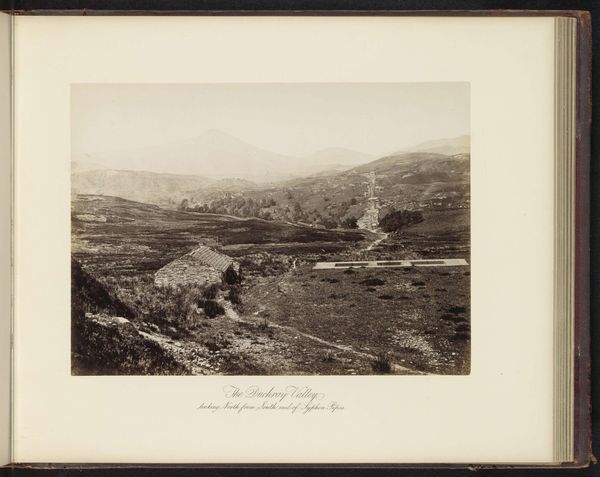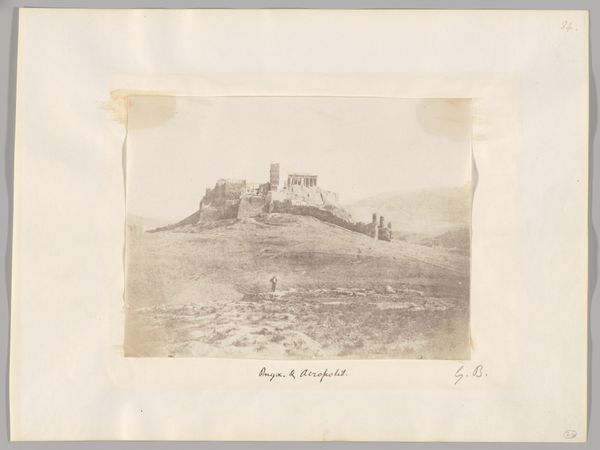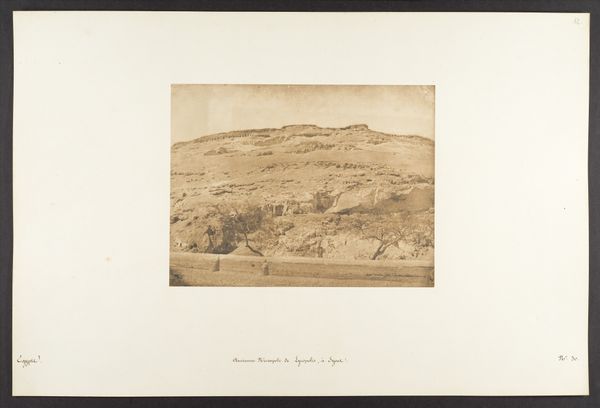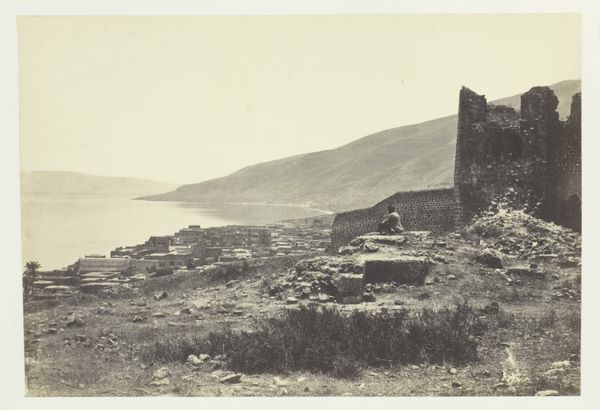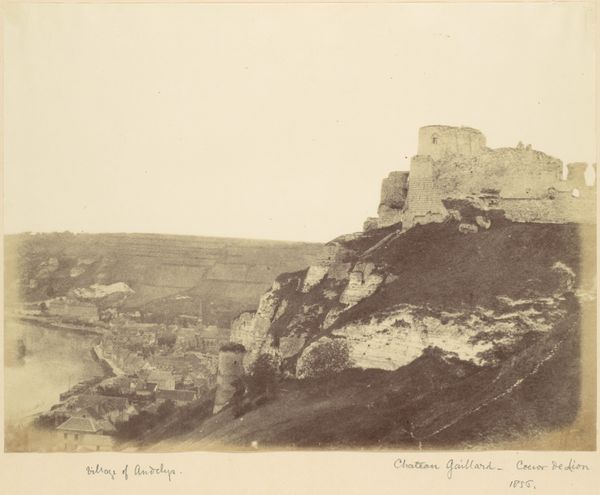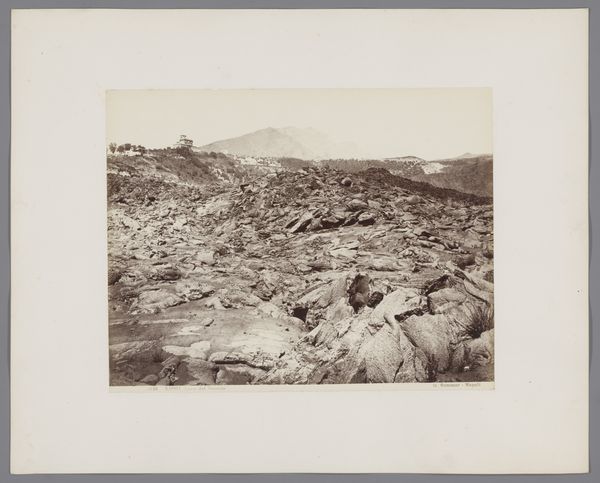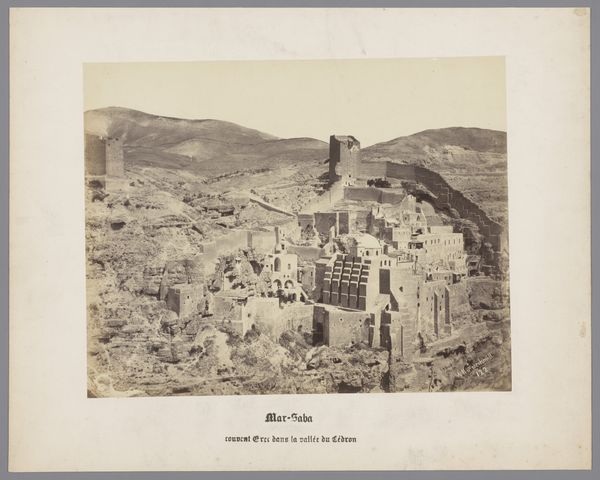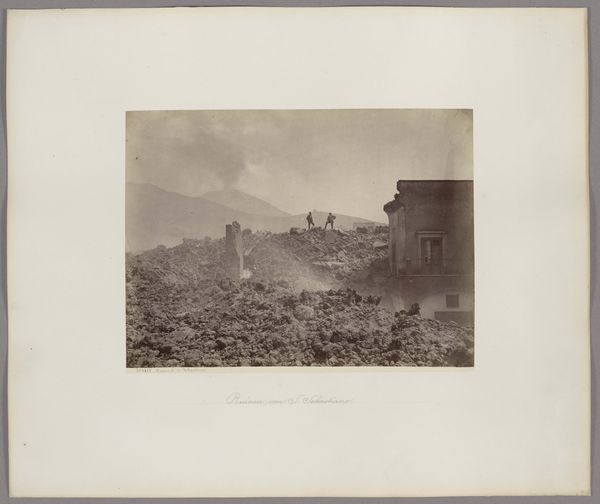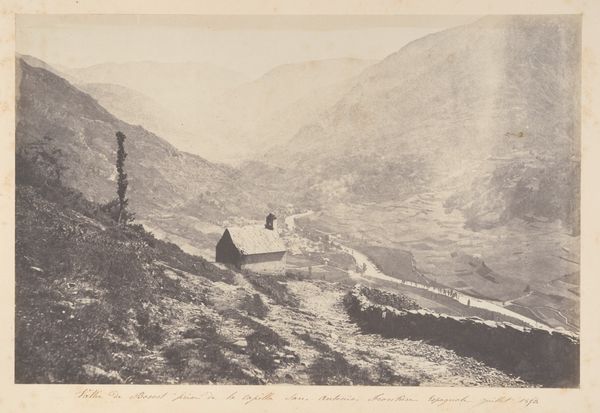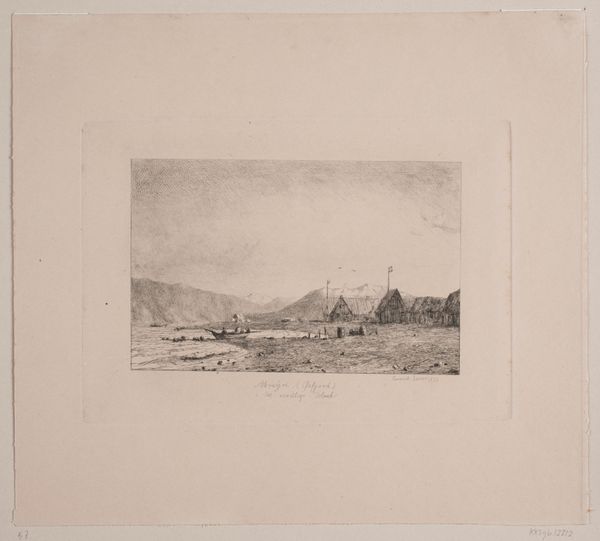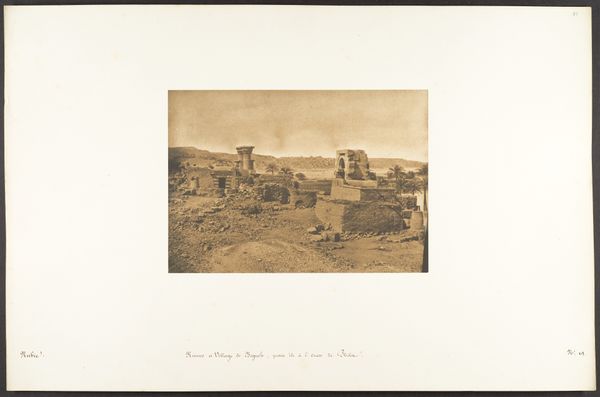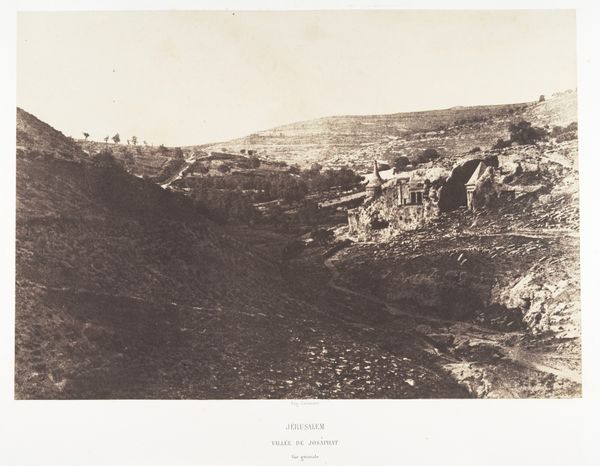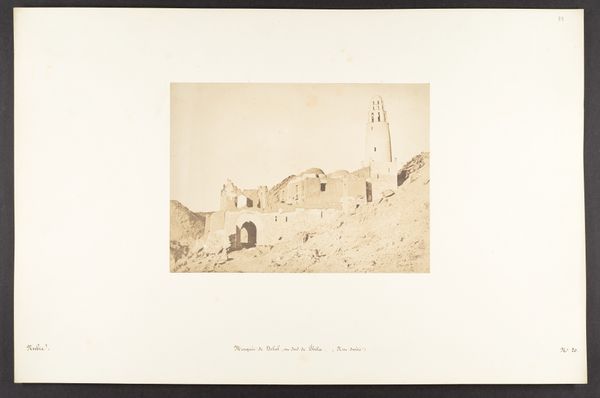
#
pencil drawn
#
photo of handprinted image
#
aged paper
#
lake
#
light pencil work
#
pencil sketch
#
light coloured
#
old engraving style
#
white palette
#
watercolour illustration
#
watercolor
Dimensions: height 240 mm, width 311 mm
Copyright: Rijks Museum: Open Domain
Here we see Francis Frith's 19th-century photograph of Tiberias and the Sea of Galilee, where ruins and the lone figure become potent symbols. The ruins evoke the passage of time and the transience of human achievement, a familiar memento mori motif. This echoes the crumbling empires found in Piranesi’s etchings of Rome. The lone figure, perched amidst the ruins, is a potent symbol of human reflection. Consider the "melancholia" archetype, where figures contemplate the weight of existence amidst decay. Such images tap into our collective memory of fallen civilizations, stirring a subconscious awareness of our mortality and the cyclical nature of history. This landscape, with its layers of history and spiritual significance, engages viewers on a deeply personal, almost primal level. The enduring appeal lies in how it resurrects, shifts, and reshapes itself across time.
Comments
No comments
Be the first to comment and join the conversation on the ultimate creative platform.
